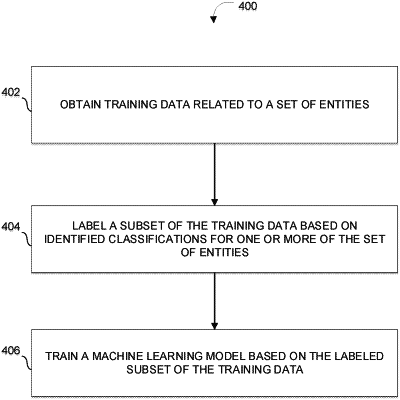| CPC G06F 21/554 (2013.01) [G06F 16/9024 (2019.01); G06F 21/552 (2013.01); G06N 20/00 (2019.01)] | 20 Claims |

|
1. A system for predicting entity behavior, the system comprising:
one or more processors; and
a memory storing instructions that, when executed by the one or more processors, cause the system to:
obtain first data for a set of entities related to a first time period;
label a subset of the first data based on identified classifications for one or more of the set of entities;
assign numerical labels based on the identified classifications;
obtain second data for the set of entities related to a second time period;
obtain third data for the set of entities related to a third time period, wherein the first data, the second data, and the third data, first changes between the first data and the second data, and second changes between the second data and the third data, relate to respective schedules associated with the set of entities, extents to which the set of entities have complied with the schedules, and a degrees of progress associated with the schedules;
map the extents to scores;
predict, via a machine learning component, future scores for the respective entities based on the scores, historical data, and prospective plan information of the entities; and
implement one or more actions based on the predicted future scores.
|